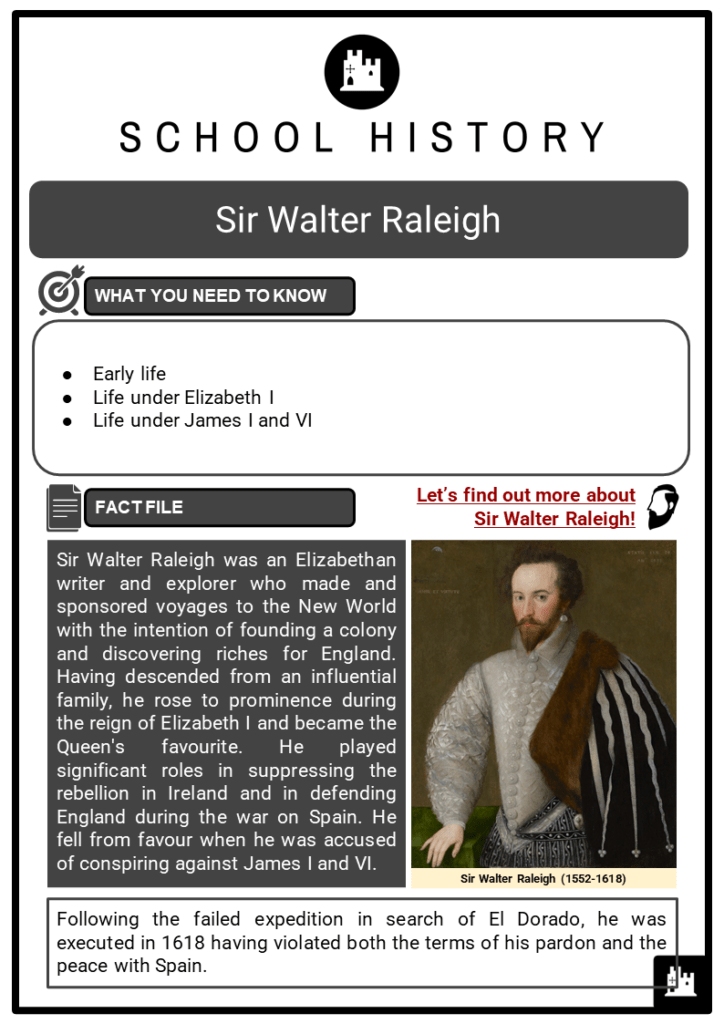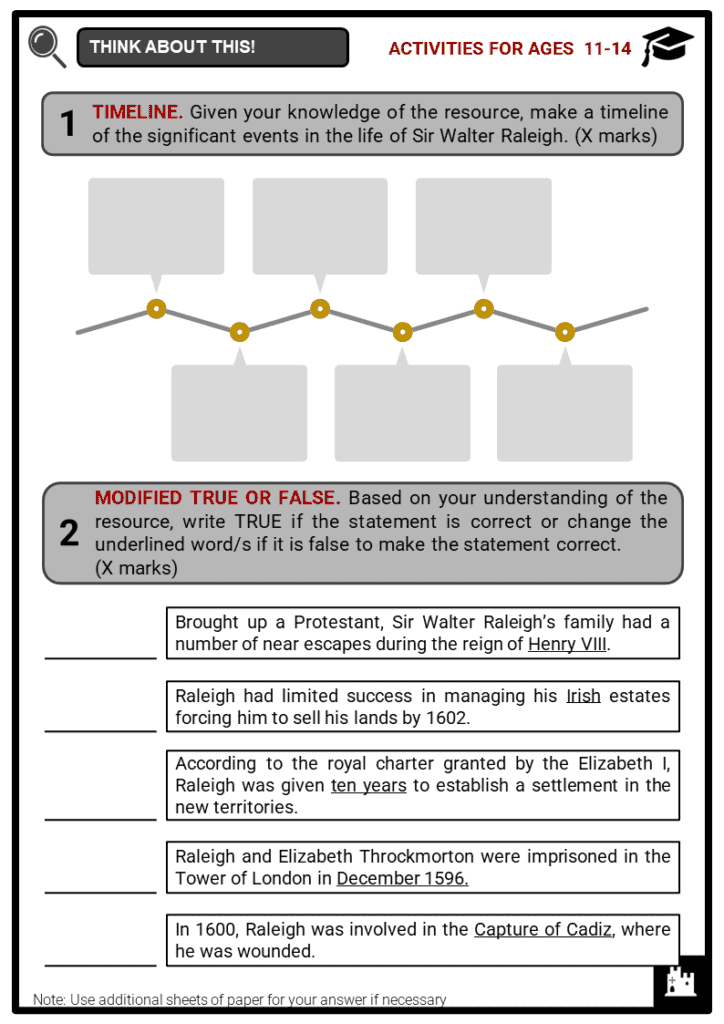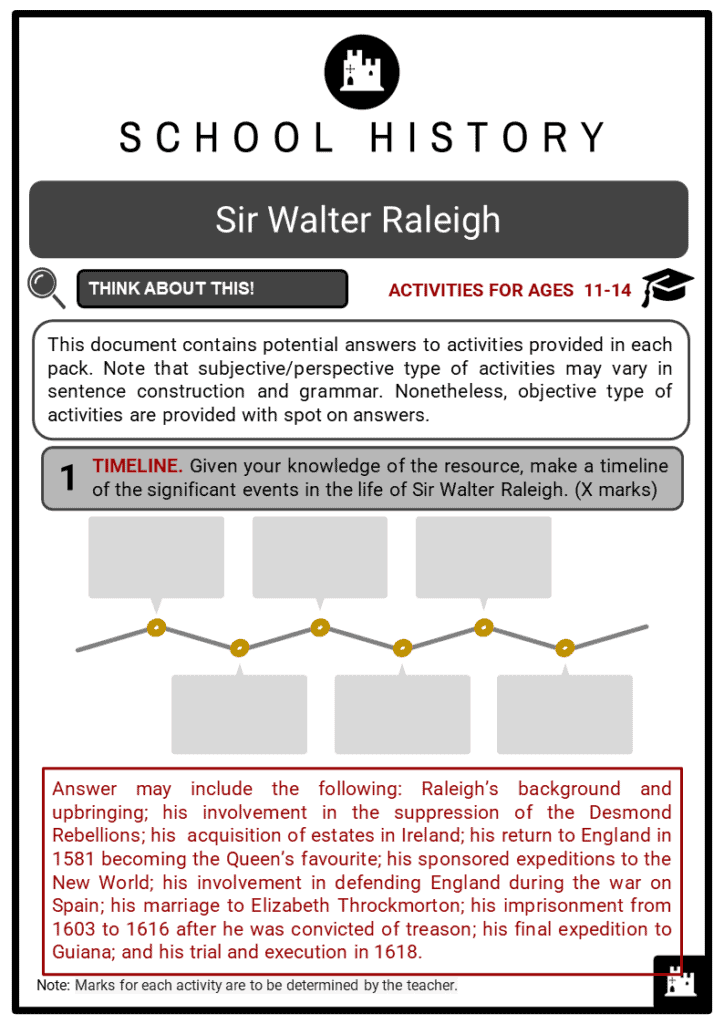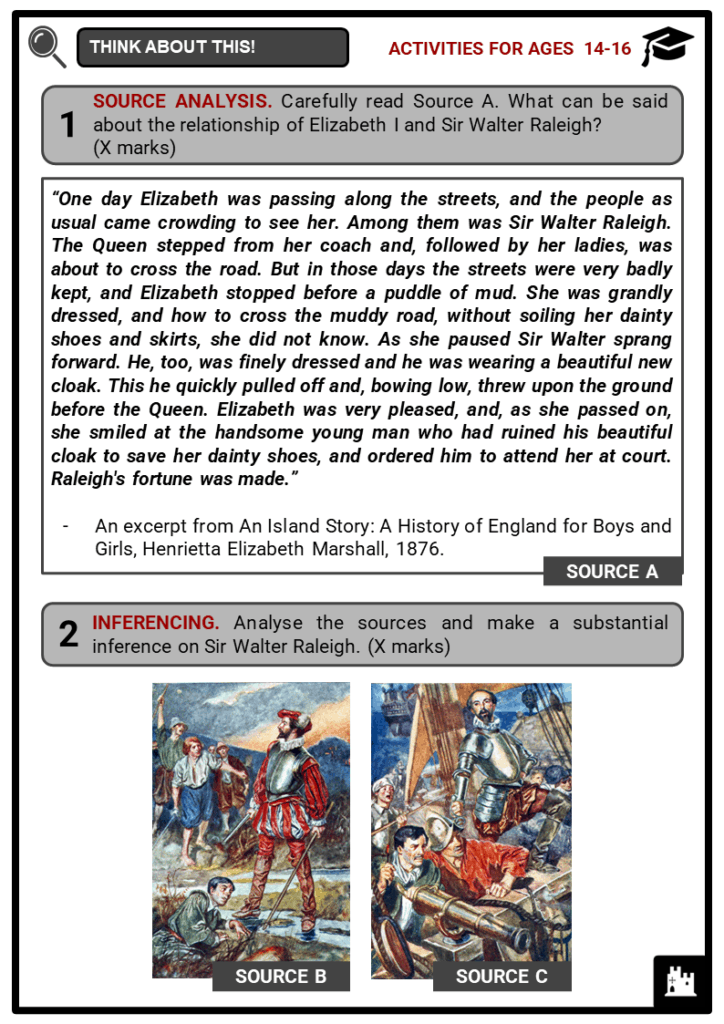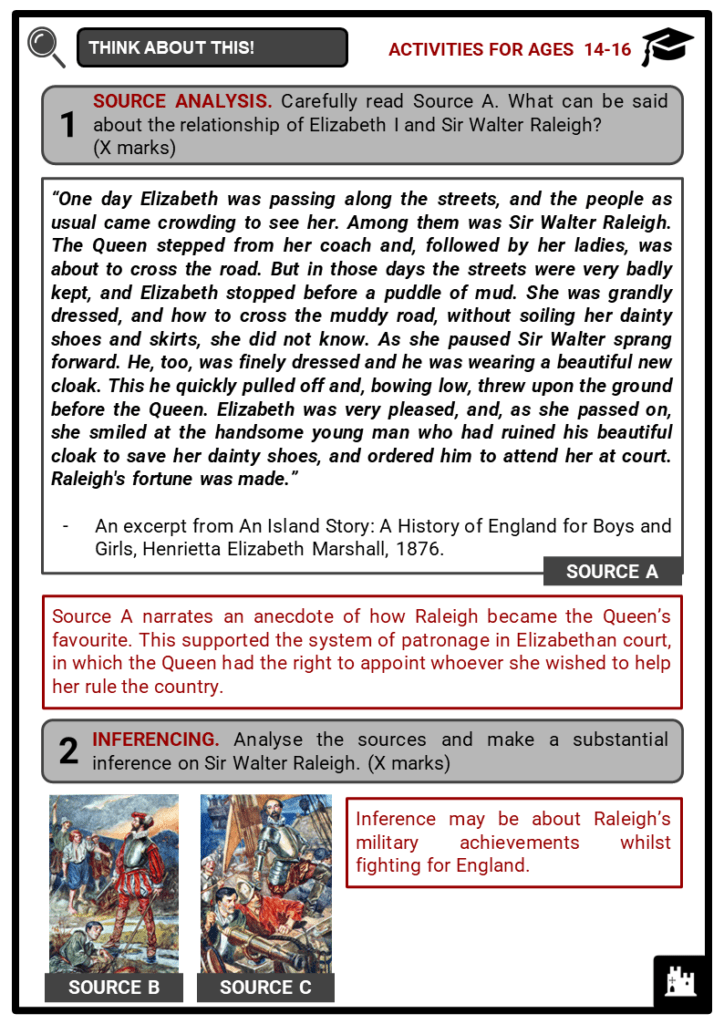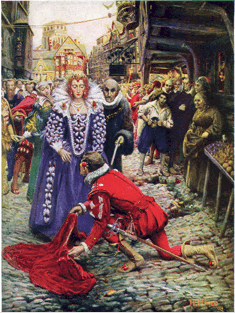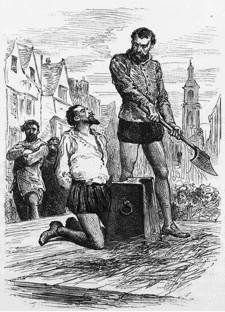Download Sir Walter Raleigh Worksheets
Do you want to save dozens of hours in time? Get your evenings and weekends back? Be able to teach Sir Walter Raleigh to your students?
Our worksheet bundle includes a fact file and printable worksheets and student activities. Perfect for both the classroom and homeschooling!
Table of Contents
Add a header to begin generating the table of contents
Summary
- Early life
- Life under Elizabeth I
- Life under James I and VI
Key Facts And Information
Let’s find out more about Sir Walter Raleigh!
- Sir Walter Raleigh was an Elizabethan writer and explorer who made and sponsored voyages to the New World with the intention of founding a colony and discovering riches for England. Having descended from an influential family, he rose to prominence during the reign of Elizabeth I and became the Queen's favourite. He played significant roles in suppressing the rebellion in Ireland and in defending England during the war on Spain. He fell from favour when he was accused of conspiring against James I and VI.
- Following the failed expedition in search of El Dorado, he was executed in 1618 having violated both the terms of his pardon and the peace with Spain.
Early life
- Around 1552, Sir Walter Raleigh was born to Walter Raleigh of Fardel and Katherine Champernowne at Hayes Barton. He descended from an affluent family in Devonshire. His kinship to the Champernownes made his family prominent in the Elizabethan court.
- Brought up a Protestant, his family had a number of near escapes during the Catholic restoration under Mary I.
- He resented Roman Catholicism during his childhood and leaned more towards the reformed religion.
- He fought for the French Protestants in 1569 and attended Oriel College, Oxford in 1572.
- He left a year later without a degree and finished his education in the Inns of Court.
- Between 1579 and 1583, he fought against the Irish rebels in Munster and also criticised the way English policy was being implemented in Ireland.
- Following the attainders arising from the Desmond Rebellions, he became one of the principal landowners in Munster and made the town of Youghal his occasional home as an Irish landlord.
- It has been thought that he was responsible for introducing the potato in the region.
- During his stay in Ireland, he became acquainted with another Englishman, the poet Edmund Spenser.
- He had limited success in managing his Irish estates forcing him to sell his lands by 1602.
- Raleigh travelled back to England in 1581 when his company had been disbanded. Due to his efforts in increasing the influence of the Protestant Church in Ireland, he began to become a favourite of Elizabeth I. He was later knighted and was promoted to prominent positions such as Lord Lieutenant of Cornwall and vice-admiral of the Cornwall and Devon.
Life under Elizabeth I
- To discover riches from the New World and to create a base from which to send privateers on raids against the treasure fleets of Spain, Elizabeth I granted Raleigh a royal charter in 1584.
- The royal charter allowed Raleigh to explore, colonise and rule "remote, heathen and barbarous lands, countries and territories, not actually possessed of any Christian Prince or inhabited by Christian People", in exchange for one-fifth of all the gold and silver that might be mined there.
- Raleigh was also given seven years to establish a settlement in the new territories.
- His colonising enterprises were motivated by his desire to check the power of Spain in the New World.
- Whilst his efforts were not successful, he is credited for initiating the movement which led to the establishment of English settlements in America.
- He himself never visited North America, but he headed significant expeditions in the succeeding years.
- 1585 - He sent the first group of colonists to the Roanoke Island.
- However, due to dwindling food supplies and Indian attacks, the settlement failed and the colonists returned to England the following year aboard a ship headed by Sir Francis Drake.
- 1587 - He sent another expedition to establish a settlement on Roanoke Island under the governance of John White. To secure more supplies, White travelled back to England. By the time White returned to Roanoke, the colonists had disappeared. This came to be known as the Lost Colony of Roanoke Island.
- 1588 - He was involved in the defence against the Spanish at Devon during the Armada year of 1588.
- 1592 - He was appointed Captain of the Yeomen of the Guard and rewarded by the Queen with numerous estates such as the Durham House in the Strand and the estate of Sherborne, Dorset.
- Raleigh desired to settle in his home in Dorset with his wife Elizabeth, daughter of Sir Nicholas Throckmorton.
- However, he intended to keep it a secret since the queen had a jealous streak.
- Nonetheless, the secret marriage that occurred in 1591 was discovered by the Queen and the couple were imprisoned in the Tower of London in June 1592.
- Raleigh was released after he paid with the profits he had gained from his previous voyages.
- Whilst the couple’s first son died in infancy, they had two more children, Walter in 1593 and Carew in 1604.
- After his imprisonment and having lost the queen’s trust, Raleigh never managed to regain the same importance in the royal court.
- What made him even more unpopular was his lavish spending habits and his controversial way of thinking.
- 1595 - Raleigh undertook a voyage to Guiana in South America, the fabled kingdom of gold, El Dorado. He sailed up the Orinoco, made friends with the natives, and gathered stories about fabulous gold mines. Once back in England, he published an exaggerated account of what had been discovered in The Discovery of Guiana.
- 1596 - He was involved in the Capture of Cadiz, where he was wounded.
- 1597 - He served as the rear admiral of the Islands Voyage to the Azores. He also helped in defending England against the third Spanish Armada. With the aid of Lord Howard of Effingham, he captured a Spanish ship in retreat carrying vital information regarding the Spanish plans. In that same year, he was chosen as Member of Parliament for Dorset.
- 1600-1603 - He modernised the defences of the Channel Island of Jersey, where he was governor.
- By 1603, royal favour with Elizabeth I had been restored, but his good fortune did not last under the new king.
Life under James I and VI
- Following the death of Elizabeth I, James I and VI succeeded to the English throne. Raleigh and others were accused of conspiring against the successor to put Arabella Stuart on the throne. He was imprisoned in the Tower of London in July 1603.
- He conducted his own defence and argued that the evidence against him was hearsay.
- He was convicted for treason but the new king spared his life.
- Throughout his life, he wrote poetry and many prose works. In fact, he focused on writing during his imprisonment and continued working on The History of the World.
- He remained in the Tower until 1616.
- Raleigh was able to regain his freedom by convincing James that he knew the location of a valuable gold mine in Guiana.
- He set out on his last, fatally fruitless voyage in 1617.
- Disobeying James’ specific order to avoid any hostility against Spanish colonies or shipping, the men fought the Spaniards and sacked the settlement of Santo Tomé de Guiana.
- This violated the peace treaties with Spain.
- Raleigh’s son Walter was killed in the attacks, and the expedition returned empty-handed.
- James, pressed by the Spanish ambassador Count Gondomar and enraged at Raleigh’s failure, had him arrested upon his return.
- After a perfunctory hearing, the old sentence was confirmed and Sir Walter Raleigh was beheaded on 29 October 1618.
- Before being executed, Raleigh uttered his last words: I thank my God heartily that He hath brought me into the light to die, and not suffered me to die in the dark prison of the Tower, where I have suffered a great deal of adversity and a long sickness; and I thank God that my fever hath not taken me at this time, as I prayed God it might not.
- Sir Walter Raleigh was laid to rest in St. Margaret's, Westminster.
Image sources:

